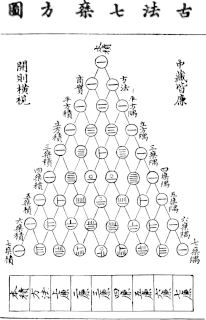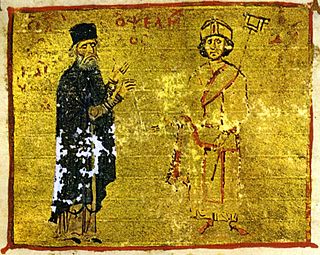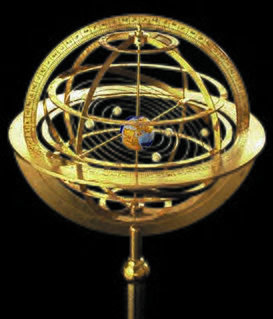 W
WAbū Ḥātim al-Muẓaffar al-Isfazārī was a Persian Muslim mathematician from Khurasan. According to Ibn al-Athir and Qutb al-Din al-Shirazi, he worked in the Seljuq observatory of Isfahan. Nezami Aruzi met him in Balkh in in 1112 or 1113.
 W
WAbu Rayhan al-Biruni was an Iranian scholar and polymath during the Islamic Golden Age. He has been variously called as the "founder of Indology", "Father of Comparative Religion", "Father of modern geodesy", and the first anthropologist.
 W
WBlessed Hermann of Reichenau, also known by other names, was an 11th-century Benedictine monk and scholar. He composed works on history, music theory, mathematics, and astronomy, as well as many hymns. He has traditionally been credited with the composition of "Salve Regina", "Veni Sancte Spiritus", and "Alma Redemptoris Mater", although these attributions are sometimes questioned. His cultus and beatification were confirmed by the Roman Catholic Church in 1863.
 W
WḤasan Ibn al-Haytham was an Arab mathematician, astronomer, and physicist of the Islamic Golden Age. Referred to as "the father of modern optics", he made significant contributions to the principles of optics and visual perception in particular. His most influential work is titled Kitāb al-Manāẓir, written during 1011–1021, which survived in a Latin edition. A polymath, he also wrote on philosophy, theology and medicine.
 W
WJia Xian was a Chinese mathematician from Kaifeng of the Song dynasty.
 W
WAbū Bakr Muḥammad ibn al Ḥasan al-Karajī was a 10th-century Persian mathematician and engineer who flourished at Baghdad. He was born in Karaj, a city near Tehran. His three principal surviving works are mathematical: Al-Badi' fi'l-hisab, Al-Fakhri fi'l-jabr wa'l-muqabala, and Al-Kafi fi'l-hisab.
 W
WOmar Khayyam was a Persian mathematician, astronomer, philosopher, and poet. He was born in Nishabur, in northeastern Iran, and spent most of his life near the court of the Karakhanid and Seljuq rulers in the period which witnessed the First Crusade.
 W
WNotker Labeo, also known as Notker the German or Notker III, was a Benedictine monk and the first commentator on Aristotle active in the Middle Ages. "Labeo" means "the thick-lipped one". Later he was named Teutonicus in recognition of his services to the German language.
 W
WAbu al-Wafa' al-Mubashshir ibn Fatik was an Arab philosopher and scholar well versed in the mathematical sciences and also wrote on logic and medicine. He was born in Damascus but lived mainly in Egypt during the 11th century Fatimid Caliphate. He also wrote an historical chronicle of the reign of al-Mustansir Billah. However, the book he is famed for and the only one extant, Kitāb mukhtār al-ḥikam wa-maḥāsin al-kalim, the "Selected Maxims and Aphorisms", is a collection of sayings attributed to the ancient sages translated into Arabic. The date of composition given by the author is 1048–1049.
 W
WAbu Bakr Muhammad Ibn ‘Abd al-Bāqī al-Baghdadi al-Ansārī al-Kaabī (1050-1141) also known as Qadi al-Maristan, was an Arab jurist and mathematician.
 W
WMichael Psellos or Psellus was a Byzantine Greek monk, savant, writer, philosopher, politician and historian. He was born in 1017 or 1018, and is believed to have died in 1078, although it has also been maintained that he remained alive until 1096.
 W
WShen Kuo or Shen Gua, courtesy name Cunzhong (存中) and pseudonym Mengqi Weng (夢溪翁), was a Chinese polymathic scientist and statesman of the Song dynasty (960–1279). Excelling in many fields of study and statecraft, he was a mathematician, astronomer, meteorologist, geologist, entomologist, anatomist, climatologist, zoologist, botanist, pharmacologist, medical scientist, agronomist, archaeologist, ethnographer, cartographer, geographer, geophysicist, mineralogist, encyclopedist, military general, diplomat, hydraulic engineer, inventor, economist, academy chancellor, finance minister, governmental state inspector, philosopher, art critic, poet, and musician. He was the head official for the Bureau of Astronomy in the Song court, as well as an Assistant Minister of Imperial Hospitality. At court his political allegiance was to the Reformist faction known as the New Policies Group, headed by Chancellor Wang Anshi (1021–1085).
 W
WAbu Sa'id Ahmed ibn Mohammed ibn Abd al-Jalil al-Sijzi was an Iranian Muslim astronomer, mathematician, and astrologer. He is notable for his correspondence with al-Biruni and for proposing that the Earth rotates around its axis in the 10th century.
 W
WSu Song was a Chinese polymathic scientist and statesman. Excelling in a variety of fields, he was accomplished in mathematics, astronomy, cartography, geography, horology, pharmacology, mineralogy, metallurgy, zoology, botany, mechanical engineering, hydraulic engineering, civil engineering, architecture, invention, art, poetry, philosophy, antiquities, and statesmanship during the Song Dynasty (960–1279).
 W
WAbu al-Hasan 'Ali ibn 'Abd al-Rahman ibn Ahmad ibn Yunus al-Sadafi al-Misri was an important Egyptian Muslim and mathematician, whose works are noted for being ahead of their time, having been based on meticulous calculations and attention to detail.
 W
WAbū Isḥāq Ibrāhīm ibn Yaḥyā al-Naqqāsh al-Zarqālī al-Tujibi ; also known as Al-Zarkali or Ibn Zarqala (1029–1087), was an Arab Muslim instrument maker, astrologer, and the most important astronomer from the western part of the Islamic world.